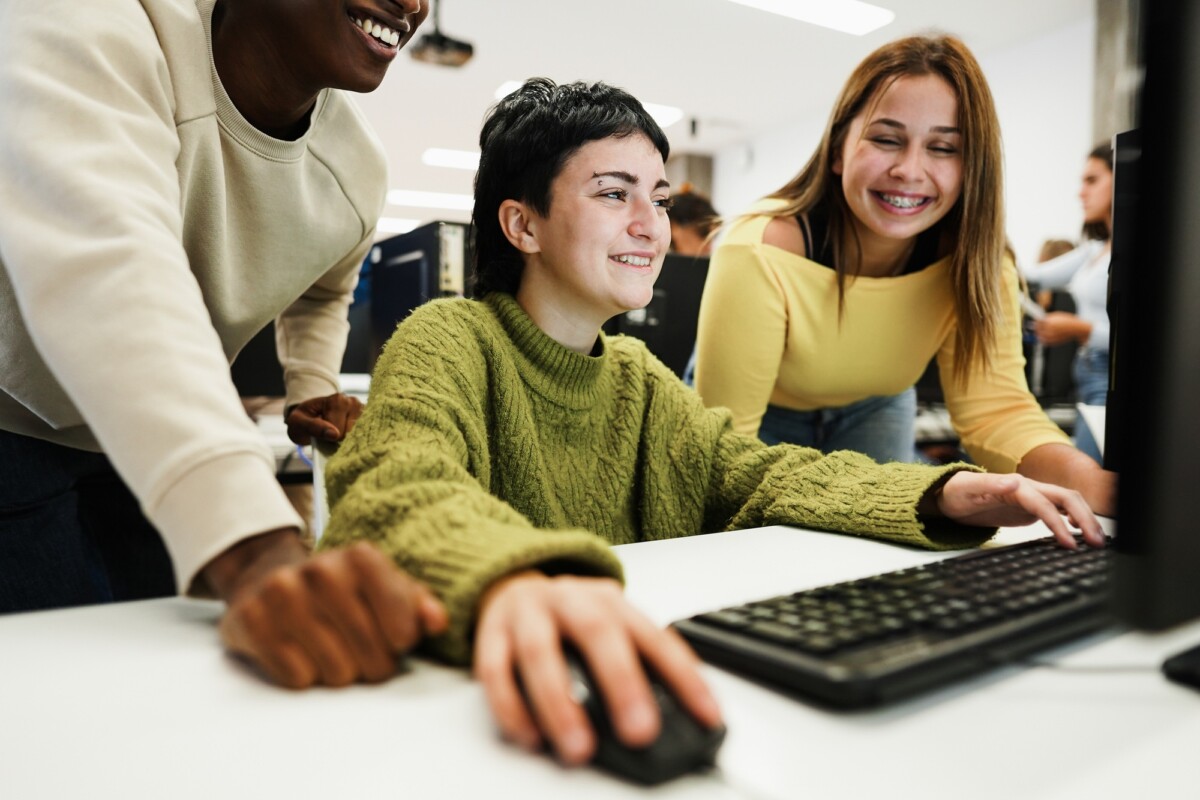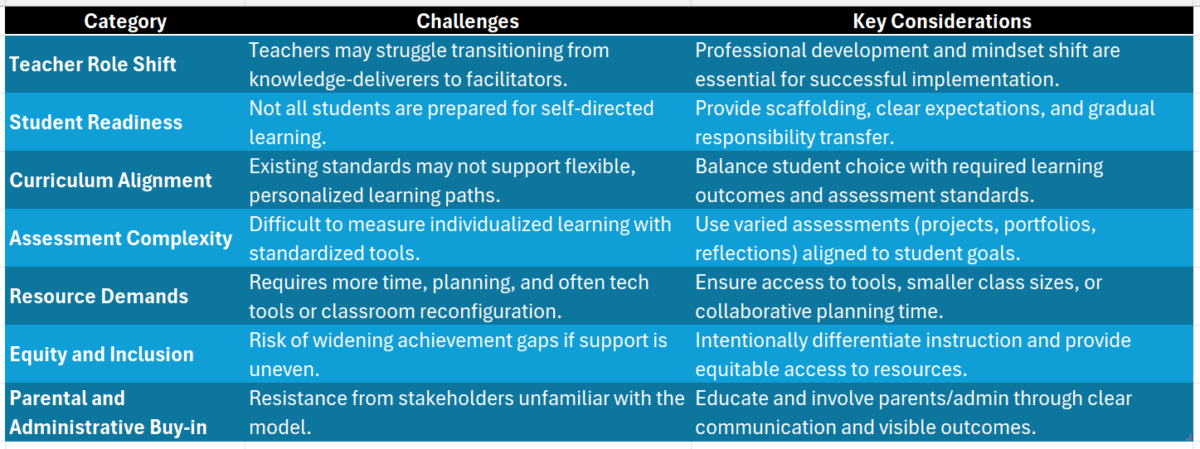
In today’s classrooms, the question of whether student-centered instruction improves learning outcomes is more important than ever. This approach shifts the focus from teachers to students, allowing them to take charge of their own learning. But how does this really work?
What is Student-Centered Instruction?
Student-centered instruction is all about engaging students in their learning process. Instead of just listening to lectures, students participate in discussions, projects, and hands-on activities. This method encourages critical thinking and helps students connect what they learn to real-life situations. For example, community-based instruction allows students to learn outside the classroom, making lessons more relevant and exciting!
Benefits of Student-Centered Instruction
- Increased Engagement: Students are more interested when they have a say in their learning.
- Improved Collaboration: Co-teaching examples show how teachers can work together to support diverse learners.
- Personalized Learning: Each student can learn at their own pace, which helps them grasp concepts better.
In conclusion, student-centered instruction not only makes learning more enjoyable but also leads to better outcomes. By focusing on students, we prepare them for a successful future!
Study smarter, not harder—Enroll online today!
How Does Student-Centered Instruction Enhance Engagement?
Student-centered instruction is a teaching approach that places students at the core of the learning process, significantly improving learning outcomes. When students are actively involved, they engage more, leading to better understanding and retention of information. So, how does this method enhance engagement?
Active Participation
One major benefit is that it encourages active participation. Students become active learners, not just passive listeners. For instance, in community-based instruction, students work on projects related to their lives, making learning more relevant and exciting, which boosts their motivation.
Collaboration and Co-Teaching
Collaboration is another way student-centered instruction enhances engagement. Co-teaching examples illustrate how teachers can create a dynamic learning environment together. When students see their teachers collaborating, they feel supported and are more likely to participate, fostering a sense of community.
Personalized Learning
This approach also allows for personalized learning experiences. Each student has unique interests and learning styles. By tailoring lessons to meet these needs, teachers can engage students more effectively, using technology to let them choose projects that excite them.
Real-World Connections
When lessons connect to real-world issues, student engagement skyrockets. Community-based instruction makes education feel relevant, encouraging active participation in discussions and projects.
Empowering Student Voice
Finally, student-centered instruction empowers students to express their opinions. This investment in their learning leads to increased motivation and a vibrant classroom atmosphere.
The Role of Technology in Student-Centered Learning Environments
In today’s classrooms, the effectiveness of student-centered instruction is increasingly important. With technology’s rise, educators are finding innovative ways to engage students, fostering independence and collaboration for more meaningful learning experiences.
Enhancing Engagement
Technology is vital in student-centered instruction. Tools like interactive whiteboards and educational apps allow students to explore subjects at their own pace. For example, community-based instruction connects classroom lessons to real-world experiences, enhancing understanding and retention.
Supporting Collaboration
Co-teaching examples demonstrate how technology facilitates teamwork. When teachers collaborate through digital platforms, they create dynamic learning environments. Students benefit from diverse teaching styles, enriching their educational experience and preparing them for future teamwork in their careers.
Personalized Learning
Another advantage of technology is personalized learning. Adaptive learning software provides tailored lessons that meet individual needs, ensuring that every student progresses at their own pace, making learning more effective and enjoyable.
Access to Resources
Technology opens a wealth of resources, allowing students to access online libraries, educational videos, and interactive simulations. This supports community-based instruction by enabling research on local issues, fostering a deeper connection to their learning.
Encouraging Independence
Finally, technology promotes independence. By using online platforms for assignments, students learn to manage their time and responsibilities, boosting confidence and preparing them for future academic and career challenges.
Measuring the Impact: Does Student-Centered Instruction Improve Learning Outcomes?
In education, a key question arises: Does student-centered instruction improve learning outcomes? This approach prioritizes students’ needs, interests, and experiences, making learning more relevant and engaging. Understanding its impact is essential for both educators and students.
The Power of Student-Centered Instruction
Student-centered instruction shifts the focus from teachers to students, allowing them to take charge of their learning. Research indicates that active student involvement leads to better understanding and retention, resulting in improved academic performance.
Benefits of Community-Based Instruction
Community-based instruction exemplifies student-centered learning by linking classroom lessons to real-world experiences. For instance, students might engage in projects involving local businesses or community issues, enhancing their learning while developing valuable skills.
Co-Teaching Examples
Co-teaching is another effective strategy within student-centered instruction. By collaborating, teachers can offer diverse perspectives and support. For example, one teacher may focus on content while the other addresses various learning styles, significantly boosting student engagement and success.
Engaging Students Through Choice
A crucial element of student-centered instruction is providing students with choices. When they can select their projects or topics, they become more invested in their learning, leading to increased motivation and better outcomes.
Encouraging Collaboration
Collaboration is vital as well. When students work together, they learn from each other and develop essential social skills. Group projects and discussions foster a sense of community, making learning more enjoyable and effective.
Study smarter, not harder—Enroll online today!
Challenges and Considerations in Implementing Student-Centered Instruction

Implementing student-centered instruction can be a game-changer in education. It shifts the focus from teachers delivering information to students actively engaging in their learning. But, like any new approach, it comes with its own set of challenges and considerations that educators must navigate to truly enhance learning outcomes.
Understanding the Challenges
While student-centered instruction promotes engagement, it can be difficult to implement effectively. Teachers may struggle with balancing curriculum requirements while allowing students to explore their interests. Additionally, some students may find it challenging to take on more responsibility for their learning, which can lead to frustration.
Key Considerations
- Training and Support: Teachers need proper training in student-centered methods. Professional development can help them understand how to facilitate rather than dictate learning.
- Community-Based Instruction: Integrating community-based instruction can enhance real-world learning experiences, but it requires collaboration with local organizations.
- Co-Teaching Examples: Using co-teaching examples can provide diverse perspectives in the classroom, making it easier to implement student-centered strategies effectively.
In conclusion, while student-centered instruction can improve learning outcomes, it requires careful planning and support to overcome the challenges it presents. By addressing these considerations, educators can create a more engaging and effective learning environment for all students.
Success Stories: Schools Transforming Through Student-Centered Approaches
Student-centered instruction is a transformative approach that places students at the core of their learning experiences. Schools adopting this method often witness significant improvements in student engagement and achievement. But does it truly enhance learning outcomes? Let’s delve into some success stories that showcase its effectiveness.
Success Stories in Action
Many schools have embraced student-centered instruction with impressive results. For example, a middle school in California implemented community-based instruction, allowing students to learn through real-world experiences. This approach not only made learning relevant but also boosted students’ confidence and skills.
Co-Teaching Examples
Co-teaching is another effective strategy within student-centered instruction. In a New York school, teachers collaborated to create inclusive classrooms, sharing responsibilities and tailoring lessons. This teamwork helped all students thrive, demonstrating that collaboration among educators benefits everyone.
Engaging Students Through Choice
A key element of student-centered instruction is providing students with choices in their learning. A high school in Texas allowed students to select projects based on their interests, sparking creativity and motivation, which led to higher grades and a deeper understanding of the material.
Building Community Connections
Community-based instruction enhances learning and strengthens ties between schools and local organizations. A Florida school partnered with local businesses to create internships, improving academic performance and preparing students for future careers. This hands-on experience shows the real-world impact of education.
How Scholarship.Education Supports Educators in Adopting Student-Centered Instruction
Student-centered instruction is a teaching approach that prioritizes the needs and interests of students, fostering active participation and making learning more engaging. Educators often wonder if this method truly enhances learning outcomes, which is vital for improving teaching practices and supporting student success.
At Scholarship.Education, we recognize the significance of student-centered instruction. Our resources assist educators in implementing strategies that address diverse learning styles. Here’s how we help teachers:
Key Benefits of Student-Centered Instruction
- Engagement: Increases student involvement in their learning.
- Critical Thinking: Promotes independent thinking and problem-solving.
- Collaboration: Encourages teamwork through community-based instruction and co-teaching examples.
These strategies help create a dynamic classroom environment that nurtures growth and curiosity. With our support, teachers can confidently adopt student-centered methods, ensuring every student thrives.
Practical Strategies for Implementation
- Flexible Grouping: Allow students to work in various groups to learn from each other.
- Choice Boards: Offer assignment options that align with students’ interests.
- Real-World Connections: Use community-based instruction to relate lessons to students’ lives.
Co-Teaching Examples
Co-teaching effectively implements student-centered instruction. For example, two teachers can collaborate to design lessons that cater to different learning styles, enhancing the classroom experience for all students.
Study smarter, not harder—Enroll online today!
FAQs
1. What is student-centered instruction?
Student-centered instruction is a teaching approach that shifts the focus from the teacher delivering content to students actively participating in their own learning through collaboration, problem-solving, and critical thinking.
2. How is it different from traditional teaching?
Unlike traditional, lecture-based teaching, student-centered instruction emphasizes student choice, engagement, and responsibility in the learning process.
3. What are examples of student-centered strategies?
Common strategies include project-based learning, group discussions, peer teaching, flipped classrooms, and inquiry-based activities.
4. What are the benefits of student-centered learning?
It helps students develop critical thinking, communication, and self-management skills, while also increasing motivation and engagement.
5. Can student-centered instruction be used in all subjects?
Yes, this approach can be adapted to fit any subject area, from math and science to language arts and social studies.
6. What is the teacher’s role in a student-centered classroom?
Teachers act as facilitators or guides, helping students set goals, explore content, and reflect on their learning rather than simply delivering information.






